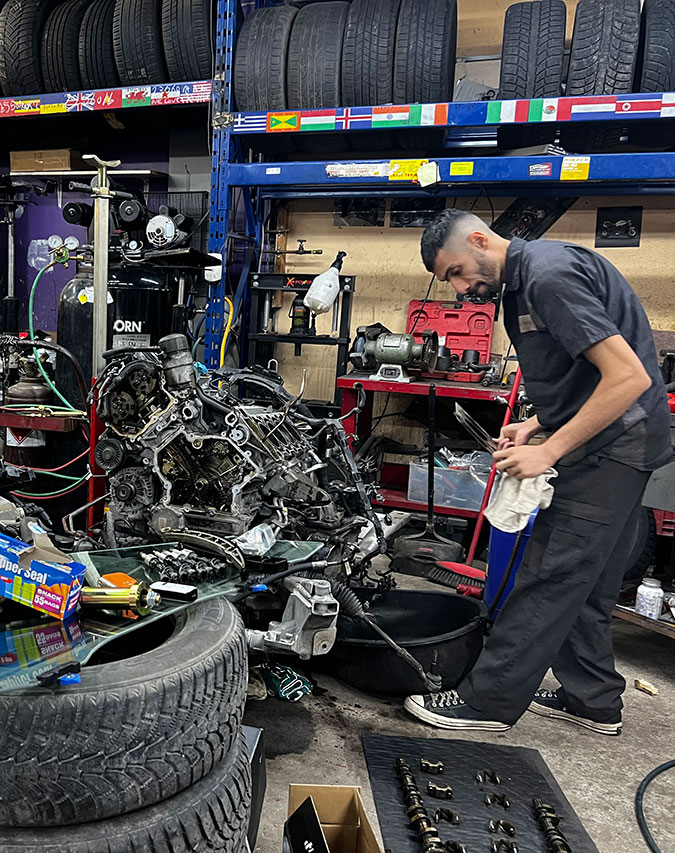Anxiously, you press the big red triangle above the car radio, flashing lights alerting other drivers something is wrong, while you steer your vehicle onto the highway shoulder.
This is a fear Rana Al-Khalidi says she battles frequently following the purchase of her Tesla.
As some Ottawans shift to electric vehicles, or EVs, they face challenges leaving gas pumps for plug-in batteries.
For Al-Khalidi, the lack of charging stations in Ottawa is a frustrating reality.
“I wish there were more,” she says. “The availability is a bit sparse.”
She says she primarily charges her vehicle at home, but when she can’t, she’s fearful her vehicle won’t get her where she needs to go.
“With good planning and charging it overnight, I’ve never been stuck,” she says, “but I always worry. That anxiety lives there. I ask myself, ‘What if I go to the countryside?’ or ‘What if I didn’t charge it two nights before? Am I going to get stuck?’ “
Al-Khalidi says her friends were skeptical of her purchase for that reason.
“I often tell my friends about the cost savings, but they worry about reliability. My friends say, ‘What if it stops all of a sudden?’”
The city has been trying to answer that need. A report from ChargeHub on EV charging infrastructure in Ottawa reveals that the city has 570 public charging stations, 95 per cent of which are level two; the others are level three. The difference between a level two and level three charger is speed of charge. Level three is faster.
A section of the report addressing locations between Toronto and Montreal reads “… the capital understands that it is in fact on the connecting highways … that there is often a lack of charging stations for the incoming numerous visitors.”
A data report from Electric Autonomy says that Canada now has more than 27,181 public charging ports at 11,077 locations, with a 32.7 per cent increase in infrastructure between March of 2023 to 2024.
Although an EV is initially pricier, Al-Khalidi does not regret the purchase. During her travels to Toronto, she says she spent no more than $40 on charging, “which is way less than what I used to pay for gas.”
Canada’s Electric Vehicle Availability Standard is the regulation from Environment and Climate Change Canada that aims to increase adoption of EVs in Canada. Hermine Landry, press secretary for Environment Minister Steven Guilbeault, says the push toward zero-emission vehicles is part of the federal plan to reduce greenhouse gas levels by 40 to 45 per cent by 2050.

Khaled Metwalli, a master technician, owner of Kals Auto Service and a former Tesla owner, says charging in the city is not difficult, but long travels pose more concerns.
“For city or local use, amazing. Travelling, however, is a bigger problem,” he says. “For longer trips like Montreal, you have to factor in detours and extra time for finding and using charging stations.”
Metwalli says he usually opted for a supercharging network when charging his vehicle outside his home.
According to Tesla’s website, superchargers offer longer range, charging up to “320 kilometers in 15 minutes.”
Elina Ellis, who owns an electric 2021 Ford Mustang Mach-E, says she noticed a lack of EV superchargers in Ottawa compared to standard EV chargers.
“Owning an electric vehicle isn’t necessarily practical for long journeys,” she says. “The ability to charge your car fast is something I feel like more people need.”
She says the average EV owner needs faster charging solutions.
“Not everyone is going to be using the charger for eight hours a day, like plugging it in on your way to work or school,” she says. “Some people want to use it, essentially the same as gas, where they can spend minimal time charging their car and get a good amount of charge to go distances.”
Rada Konik, a student at the University of Ottawa, says her family purchased a Tesla Model Y a year ago.
“I did sometimes stress out that I’m not going to have enough battery, but it’s been fine,” says Konik.
She says she has never had to charge outside her home, “The system tells you in advance how much battery you’ll have when you reach somewhere, so I’ve had no problems with it.”
Konik says when it comes to EVs, planning is key. “I never panic because I always calculate how much I need to go there and come back. And where and when I will charge at a station.”
April 2024 data from Statistics Canada reveal that electric vehicles accounted for 1.55 per cent of all new motor vehicle registrations in Ontario. The thinner lines that make up a small portion of the larger blocks represent the percentage ratio of EV drivers to all drivers in Canada and Ontario.
The federal government initiated the Incentives for Zero-Emission Vehicles (iZEV) Program in May, 2019. There are two levels of incentives. The first is a rebate of up to $5,000 for owning a battery electric, hydrogen fuel cell and longer-range plug-in hybrid vehicle. The second is a $2,500 dollar rebate for owning a shorter range plug-in hybrid electric vehicle.
Landry says that by making electric vehicles more affordable, Canada can “support a healthy environment and economy."
Alongside the steps towards greater infrastructure, she says, the Electric Vehicle Availability Standard requires auto manufacturers and importers to meet annual EV sales targets, starting with 20 per cent of new light-duty vehicles by 2026, growing to 60 per cent by 2030 and 100 per cent by 2035.





We have made a trip to Florida and back to Rockland Ontario easily charging at Tesla Superchargers. No anxiety as the car plans the charging stops. I do agree that Ottawa needs more superchargers b